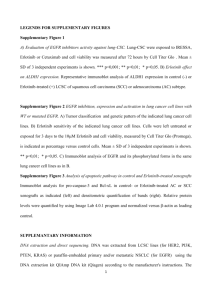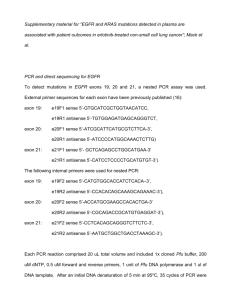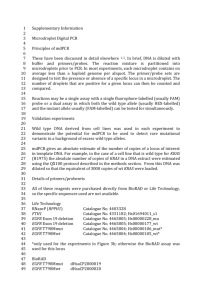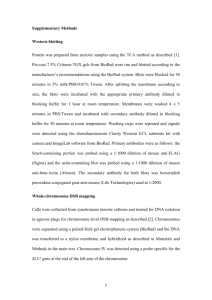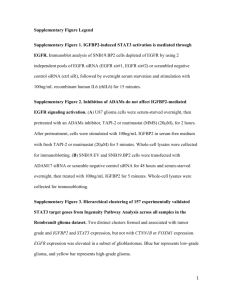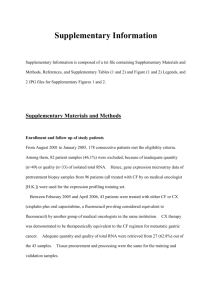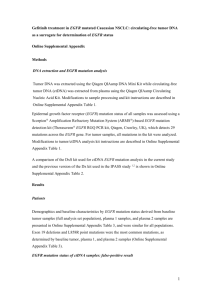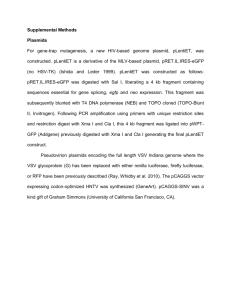SUPPLEMENTARY METHODS Combination effect. The
advertisement
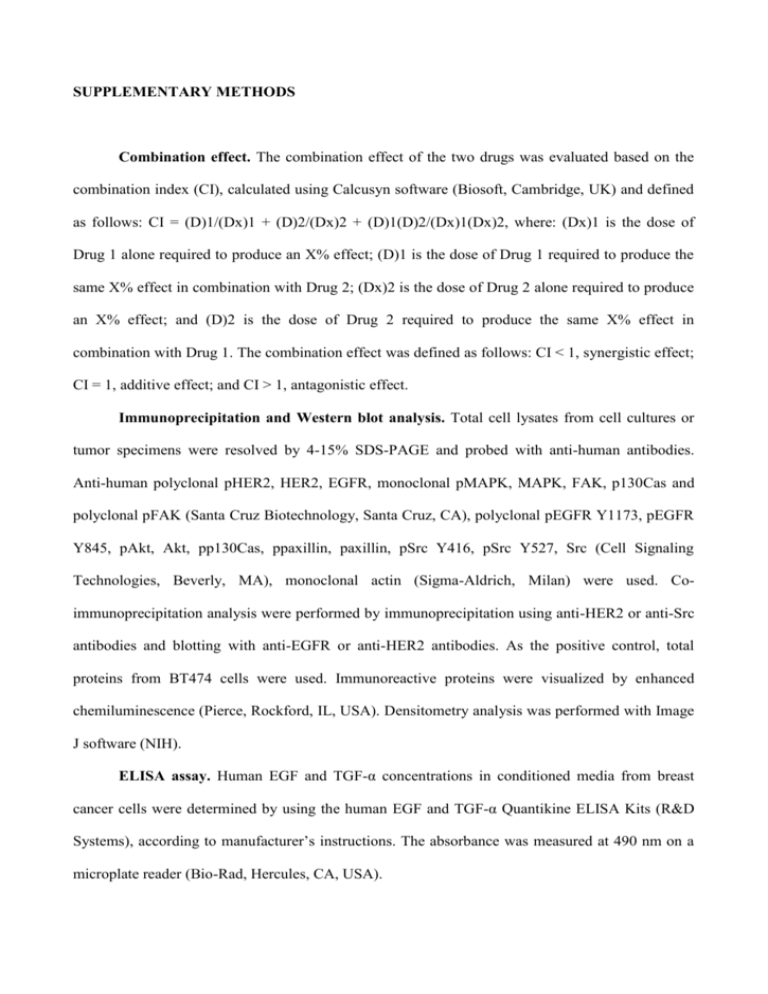
SUPPLEMENTARY METHODS Combination effect. The combination effect of the two drugs was evaluated based on the combination index (CI), calculated using Calcusyn software (Biosoft, Cambridge, UK) and defined as follows: CI = (D)1/(Dx)1 + (D)2/(Dx)2 + (D)1(D)2/(Dx)1(Dx)2, where: (Dx)1 is the dose of Drug 1 alone required to produce an X% effect; (D)1 is the dose of Drug 1 required to produce the same X% effect in combination with Drug 2; (Dx)2 is the dose of Drug 2 alone required to produce an X% effect; and (D)2 is the dose of Drug 2 required to produce the same X% effect in combination with Drug 1. The combination effect was defined as follows: CI < 1, synergistic effect; CI = 1, additive effect; and CI > 1, antagonistic effect. Immunoprecipitation and Western blot analysis. Total cell lysates from cell cultures or tumor specimens were resolved by 4-15% SDS-PAGE and probed with anti-human antibodies. Anti-human polyclonal pHER2, HER2, EGFR, monoclonal pMAPK, MAPK, FAK, p130Cas and polyclonal pFAK (Santa Cruz Biotechnology, Santa Cruz, CA), polyclonal pEGFR Y1173, pEGFR Y845, pAkt, Akt, pp130Cas, ppaxillin, paxillin, pSrc Y416, pSrc Y527, Src (Cell Signaling Technologies, Beverly, MA), monoclonal actin (Sigma-Aldrich, Milan) were used. Coimmunoprecipitation analysis were performed by immunoprecipitation using anti-HER2 or anti-Src antibodies and blotting with anti-EGFR or anti-HER2 antibodies. As the positive control, total proteins from BT474 cells were used. Immunoreactive proteins were visualized by enhanced chemiluminescence (Pierce, Rockford, IL, USA). Densitometry analysis was performed with Image J software (NIH). ELISA assay. Human EGF and TGF-α concentrations in conditioned media from breast cancer cells were determined by using the human EGF and TGF-α Quantikine ELISA Kits (R&D Systems), according to manufacturer’s instructions. The absorbance was measured at 490 nm on a microplate reader (Bio-Rad, Hercules, CA, USA). RNA interference. Small interfering RNA (siRNA) for EGFR, Src and negative control were obtained from Life Technologies. For siRNA validation, cells were transfected with EGFR or Src siRNAs (5 and 50 nmol/L) using Lipofectamine 2000 (Invitrogen) in Opti-MEM (Invitrogen). 48 or 72 hours after transfection, Western blot analysis for EGFR or Src protein expression was done. For the assessment of siRNA effects on cell survival and signalling, cells were transfected with EGFR or Src siRNA. 24 hours after transfection, cells received treatment with lapatinib and cell survival was determined 48 h later. Quantification of Alu sequences for experimental metastasis assay. Genomic DNA was extracted using QIAamp DNA Mini Kit (Qiagen, Crawley, West Sussex, UK) following the manufacturer’s protocol. To measure only the concentration of double-stranded DNA, BIORAD Experion and 1K Experion DNA Kit (BIORAD, Milan, Italy) were used according to the manufacturer’s instruction. DNA Master Power SYBR Green Kit (Applied Biosystems, Monza, Italy) was used for PCR reactions on the PCR 7500 Fast instrument (Applied Biosystems). Different specific primers used for human Alu sequences were previously reported by Schneider et al. For each PCR reaction, 10 ng of genomic DNA were used as template in a total volume reaction of 12.5 µl containing 1x DNA Master Power SYBR Green including Taq polymerase, buffer, a dNTP mixture and MgCl2. The following PCR thermal protocol was used: 95°C for 5 min, 95°C for 10 s, 65°C for 5 s, 72°C for 10 s, 84°C for 1 s (measuring of fluorescence) and 25 cycles were run. Then melting curve analysis was performed at 95°C for 10 s, 60°C for 15 s and 95°C for 10 s with a gradient of 0,1°C/s. Basing on a standard curve, quantification of human in mouse DNA was carried out using human genomic DNA isolated from human blood.





